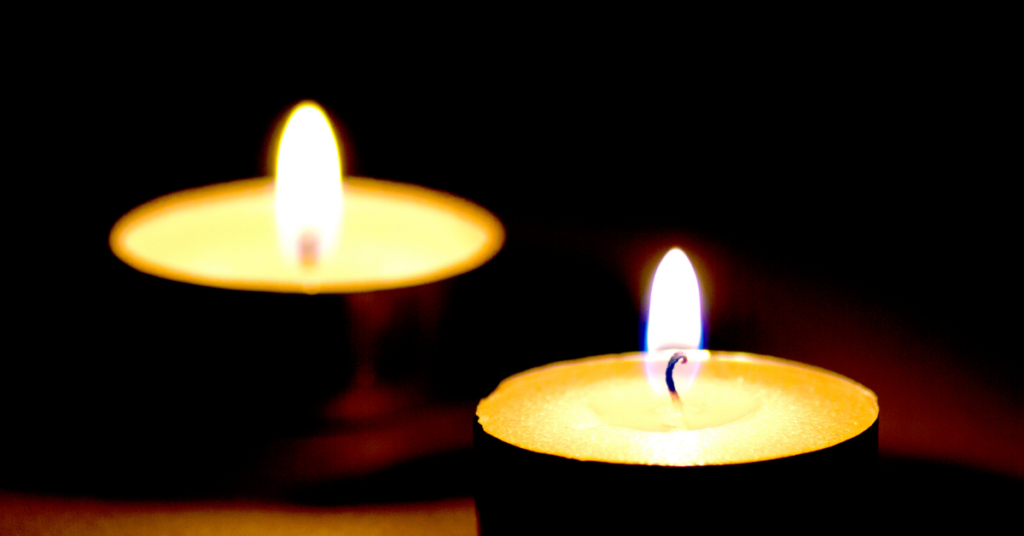The Most Common Reasons for Power Outages
Power outages, an unexpected interruption to our daily lives, often leave us in the dark, both literally and figuratively. The four most common causes of power outages and culprits range from natural forces, equipment malfunctions, and human errors to cyber threats.
- Nature’s Wrath: Severe weather events significantly contribute to power outages, with phenomena like snow accumulation on power lines or hurricanes damaging infrastructure. For instance, the 2021 Derecho storm left over 1.1 million Midwesterners without power, highlighting our power grid’s vulnerability. [1]
- Equipment Failure: While ensuring continuous electricity supply, the power grid’s interconnectedness also poses a risk. A single equipment failure can trigger a domino effect, causing widespread outages. The 2003 Northeast blackout, triggered by a software bug, left over 50 million people in the dark, showcasing the grid’s fragile nature. [2]
- Human Errors and Accidents: Sometimes, simple mistakes or unforeseen accidents, like a construction worker cutting through a power cable or a vehicle hitting a utility pole, cause power failures. The 2011 Southwest blackout, caused by a technician’s error, left nearly 7 million people without power, reminding us of human fallibility. [3]
- Cyber Threats: Our power grid is also susceptible to cyberattacks in today’s digital era. Hackers can disrupt power supply systems, leading to widespread outages, as seen in the 2015 Ukraine power grid cyberattack that left 230,000 residents without power. [4].
Understanding the diverse causes of power outages helps us appreciate our power grid’s complexity and better prepare for unforeseen disruptions. Stay informed and prepared, as every power outage brings a lesson.
The Power Grid System
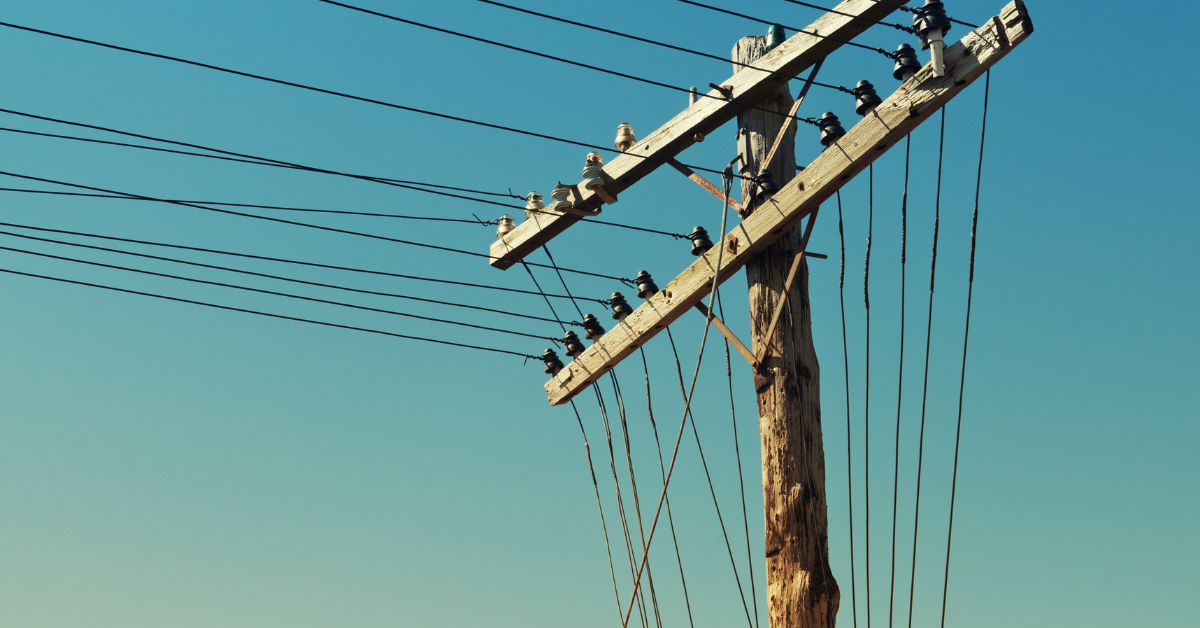
Before we dive headfirst into the world of blackouts, it’s crucial to have a basic understanding of the power system.
The electric power system is a complex network that consists of four key components:
The electricity generation itself, transmission and distribution lines, and consumption.
It begins with electricity being generated from various sources, such as coal, gas, nuclear, and renewables, at power plants. This electricity is then transmitted over long distances through high-voltage power lines, known as the transmission system. Upon reaching its destination, it enters the local distribution systems and eventually reaches homes, businesses, and other consumers.
However, despite its sophistication, the power system is not infallible. It grapples with reliability, efficiency, security, and sustainability challenges. Keeping a delicate balance between supply and demand is crucial to power failure – any disturbance can disrupt this equilibrium, leading to the bane of our modern lives: power outages. [5]
Lightning Strikes: A High Voltage Villain
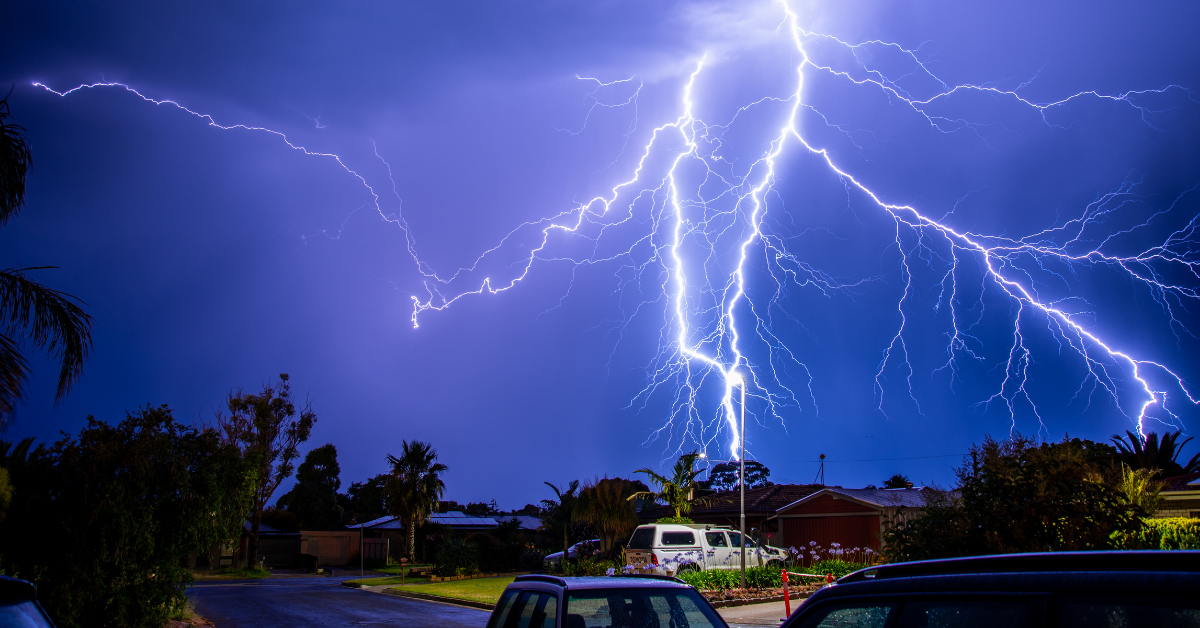
One of the leading causes of power outages is something we’ve marveled at since childhood – lightning.
When these dazzling, high-voltage natural phenomena hit electrical equipment like power lines, transformers, or power stations and substations, the damage can be significant, often resulting in power outages.
Take, for instance, the California incident in August 2023. A ginormous wildfire ignited by a single lightning strike led to widespread power outages that left over 100,000 customers in the dark. This inferno consumed over half a million acres of land and threatened countless communities. To prevent further damage to the main power grid, the power company was forced to cut off electricity to some areas. [6]
To safeguard yourself and your electronic devices during a storm, it’s wise to unplug all non-essential devices and avoid using electrical equipment. It’s also worth considering an investment in surge protectors. These nifty gadgets can shield your devices from the sudden voltage spikes caused by lightning.
High Winds: A Fierce Adversary
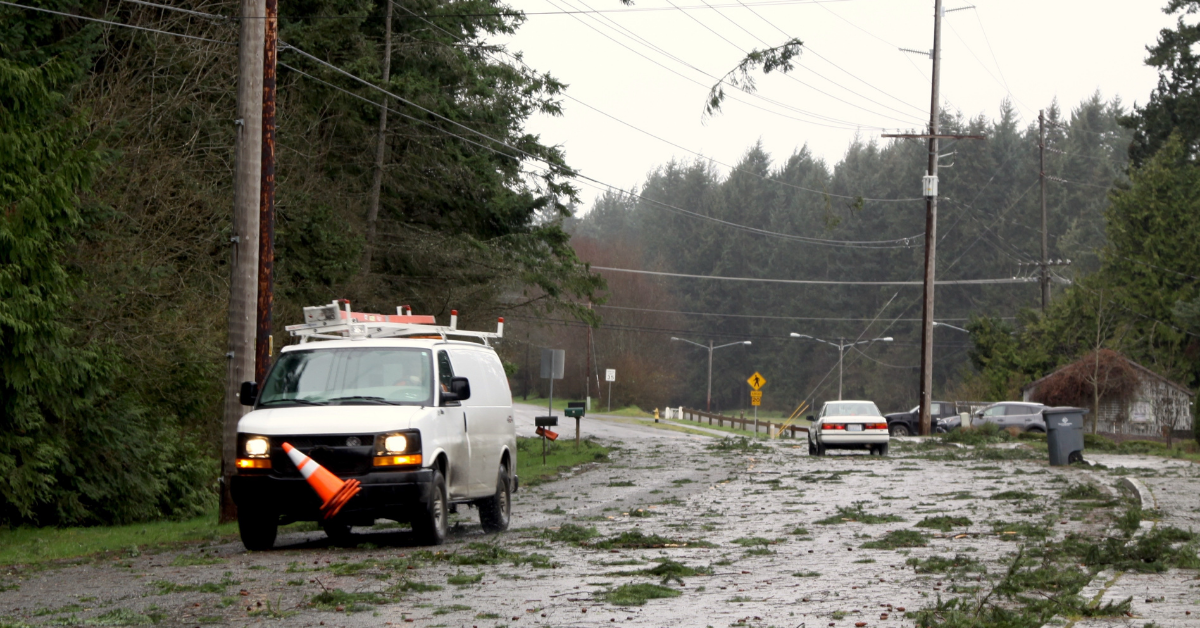
High winds can also unleash chaos on the power system. They can topple trees, branches, and poles and blow other objects onto the power poles, resulting in power outages.
To prepare for the wrath of strong winds, ensure that trees near your property are well-trimmed to prevent branches from falling onto power lines or electricity equipment. Also, secure loose objects in your yard to prevent them from becoming airborne projectiles targeting power lines or other electrical equipment.
In conclusion, understanding what causes power outages can help you prepare effectively. You can keep your family safe during power outages by taking preventive measures and creating a solid emergency plan. And remember, knowledge is power – especially when it comes to handling power outages.
Frosty Frustrations: How Ice and Snow Lead to Power Outages
In the heart of winter, the sight of a landscape blanketed in white is breathtaking. Still, it can bring an unwelcome side effect – power outages. When ice and snow overwhelm power lines, poles, underground cables, and other structures, they can cause them to sag or even break, turning your snug home into a frosty fortress without notice.
The Chill Factor: Recalling the Power Outages of 2023 and 2021
Let’s take a stroll down memory lane to March 2023. Colorado found itself in the grip of a significant winter storm that caused power outages for over 200,000 customers. With its intense snowfall, fierce winds, and freezing temperatures, the storm damaged power lines and underground poles, resulting in power losses that lasted over 24 hours in some areas. [7]
Then, there was February 2021. A severe winter storm swept through Texas and other states, resulting in power outages for more than 4 million customers at its peak. This storm disrupted the supply and demand balance of electricity, natural gas, and water, leading to rolling blackouts, rolling outages, and conservation measures. [8]
Conquering the Cold: Tips for Surviving Ice and Snow Storms
So, how do we outsmart these frosty foes? Here are a few tips:
- Have backup power sources.
- Devise a comprehensive emergency plan.
- Insulate your home.
- Keep an emergency kit at the ready.
When the Waters Rise: Navigating Power Outages During Floods

Water, while vital for life, can become a formidable foe during floods. Power lines, transformers, generators, power poles, and other equipment can be swept away or submerged, leading to distribution failures.
Staying Afloat: How to Survive Blackouts During Floods
The key to staying safe during floods is to mitigate the risk of flooding and protect your electrical system from water damage. This can be accomplished by implementing flood-resistant measures, moving crucial equipment to higher floors, and installing a sump pump.
Overloaded Electrical Systems and the Havoc They Wreak
Let’s not forget overloaded electrical, transmission, and distribution systems significantly contribute to our power woes. When the electricity demand surpasses what the system can handle, or when the machinery involved in generating, transmitting, or distributing electricity overheats, we get to experience the joy of a power outage.
When the mercury soars, our reliance on air conditioning does, too.
It’s our go-to solution to keep our homes and workplaces cool and comfortable while outside is extreme heat.
However, this increased usage can lead to a high energy demand, potentially overloading the electrical systems. Restoring power is slower than our consumption.
This is especially true during peak hours when everyone is cranking up their AC units to beat the heat.
Momentary Power Outages: More Shocking Than a Jump Scare
Have you ever had your heart race when you’re engrossed in a nail-biting movie and suddenly, the screen goes black, only to revive in a few seconds?
That’s a momentary power outage for you.
These are usually caused by temporary short circuits or faults in the electric system. They’re like friendly ghosts in the power grid, disappearing before you can say “Boo!”
And guess what? Momentary power outages aren’t just a phenomenon made for the silver screen. They occur nationwide, from the sandy shores of California to the frosty peaks of Colorado. It’s just one of the quirks of dealing with complex electrical transmission systems.
But here’s the silver lining: There are ways to handle these momentary outages and protect your appliances or electronics from damage. Surge protectors are the superheroes in this scenario. They shield your electronic devices from the sudden jolt power surge of electricity that often follows a power outage.
And while we’re at it, let’s not overlook brownouts, the pesky little brother to blackouts. They’re less dramatic but still a pain.
Brownouts occur when there’s a drop in voltage in an electrical power supply system.
It’s like the electricity is there, but it’s feeling a little under the weather.
Squirrels, Birds, and Power Outages: A Bizarre Love Triangle
Let’s chat about another cause of power outages that might make you do a double-take: animals! Yep, our fluffy and feathered companions can sometimes play the villain in the power outage drama. Squirrels, birds, and other critters can trigger power outages by chewing, nesting, or climbing power lines, poles, transformers, and other equipment.
For instance, back in 2016, a squirrel caused a power outage in La Crosse, Wisconsin, leaving thousands in the dark. And it’s not just an American problem. In Canada, a beaver was fingered as the culprit of a power outage that left 300 residents of Tumbler Ridge, British Columbia, reading by candlelight.
But don’t worry. There are ways to discourage or prevent animals from getting too close to your electrical system. One option is to install critter guards on your power lines and transformers. These devices are like the bouncers of the electrical world, keeping animals from climbing, nesting, or chewing on your electrical equipment.
The Hidden Hazards of Highways: Vehicles and Power Outages
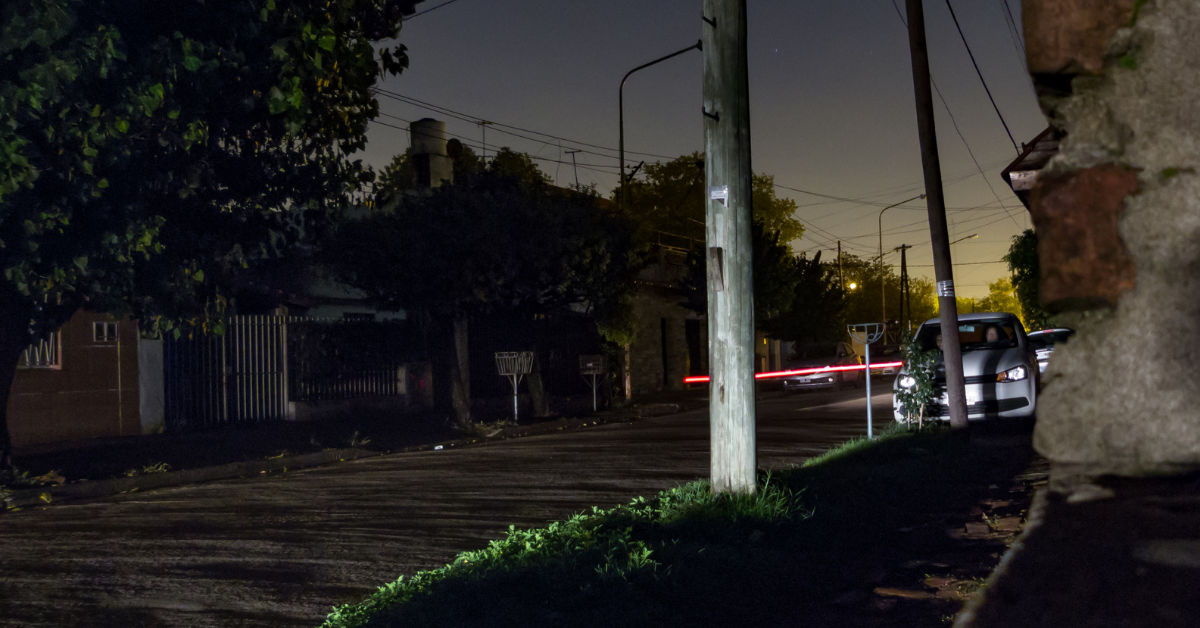
You might not realize it, but vehicles can be surreptitious saboteurs of the electrical grid. Cars, trucks, and their ilk can wreak havoc on utility poles and power lines if they collide with them.
The Department of Motor Vehicles even lists ‘striking utility poles’ as one of the leading causes of single-vehicle accidents.
The Timber Terror: Tree-Related Power Outages
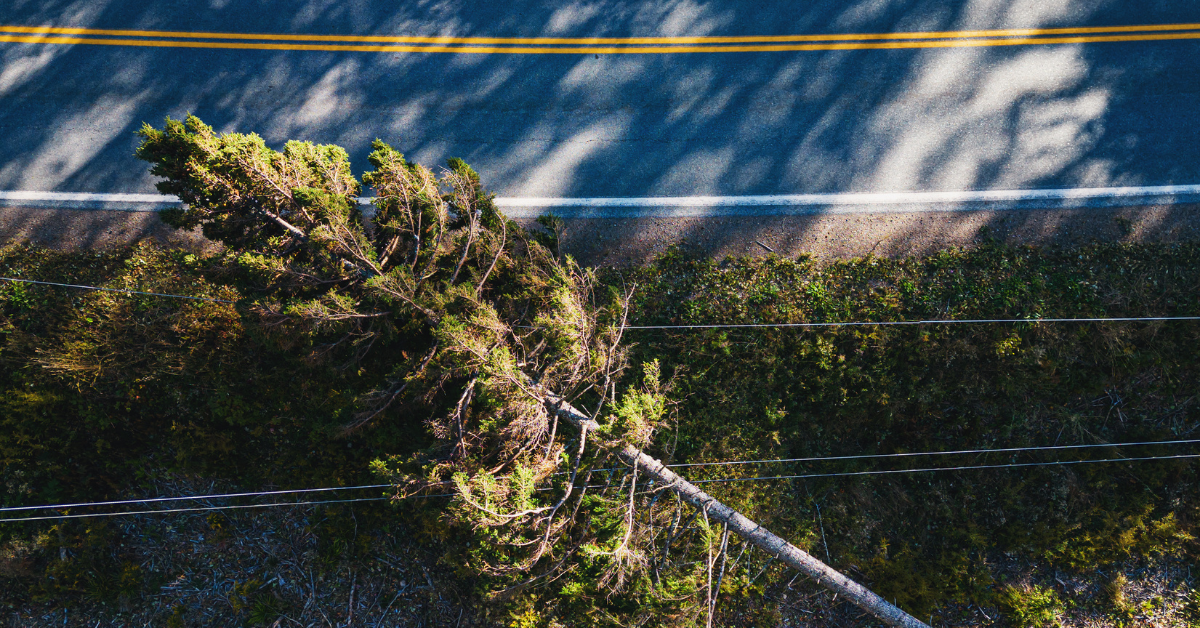
Now, let’s chat about trees. They’re the lungs of our world, providing shade, oxygen, and homes for wildlife. However, they can also morph into villains for our power lines. Overgrowth and falling branches are significant instigators of power outages.
So, there you have it. The usual suspects behind power outages include brief system glitches, wildlife interferences, vehicular accidents, and overgrowing trees. By understanding these causes, we can better equip ourselves to minimize the impact of power outages. Keep safe, stay ready, and remember – knowledge is the ultimate power!
For a deeper understanding of power outages and emergency preparedness, look at this insightful article about Survival Tips for Power Outages.
Keep safe, stay ready, and remember – knowledge is the ultimate power!
Remembering Major Power Outages in the U.S.
As a surgical assistant, I am in situations where a reliable power supply is a matter of life and death. Power outages are a reality – they can strike anywhere and anytime. If you believe they’re a mere inconvenience, these historical examples might make you reconsider.
Let’s journey through some of U.S. history’s most significant power outages
When Nature Unleashes: Hurricane-Induced Power Outages
In September 2023, a Category 4 hurricane blitzed through Louisiana, leaving almost 1 million customers powerless. Picture yourself in their shoes, sitting in the dark, knowing that weeks might pass before power is restored due to extensive infrastructure damage. [9]
Chilling, isn’t it?
And hurricanes aren’t the only natural disasters or threats.
In March 2018, a nor’easter storm swarmed the Northeast and Mid-Atlantic regions, resulting in power outages for over 2 million customers. Compounding rain, snow, and wind knocked over trees and power lines, leaving people in the dark for several days. [10]
Blackout by Design: California’s Preventive Power Outages
In October 2019, California experienced an unusual blackout – this one was deliberate. To reduce electricity demand and mitigate wildfire risks from downed or damaged power lines due to high winds, Pacific Gas and Electric (PG&E) decided to cut power for about 2.5 million customers. [11]
An Unexpected Blackout: Manhattan’s Massive Power Outage
Remember July 2019? A transformer fire triggered a sizeable blackout in Manhattan, New York. Approximately 73,000 customers were in the dark, affecting several landmarks, businesses, and subway stations. [12]
The Longest Nights: Power Outages Lasting More Than Two Days
Imagine being without power for days. That was the grim reality for over 4.5 million customers during the severe winter storm in Texas in February 2021. The storm disrupted the electrical supply because of natural gas, coal, wind, and nuclear power, leaving some customers powerless for more than four days. [13]
Then there’s the unforgettable blackout of August 2003 that touched parts of the Northeast and Midwest regions of the U.S. and parts of Canada. This colossal outage affected more than 50 million customers, with some losing power for over two days. [14]
Here, you can check out where in the last 72 hours, there has been a power outage in the U.S.
Or here, you can also stay updated for actual power outages in each region.
Water Supply During Power Outages: Your Vital Guide

Imagine this. The lights flicker, then plunge you into darkness. Your mind races to your water supply. “Will the taps still run? Is the water safe to drink?” Your answers lie in the source and type of your water supply.
Municipal Water: City Supply Under Siege
Lucky you! If you’re connected to municipal water, your taps should still run during a power outage until your local water tower empties or the city powers up its backup generators.
But, if you live in a high-rise apartment or condo, you might be less fortunate. They often rely on pumps to deliver water to higher floors, and without power, your faucets may run dry. [15]
In terms of water quality and safety, these should remain unaffected during a power outage. Unless the authorities issue a boil water advisory – it’s time to break out that camping stove!
Private Well Water: Personal Supply Pitfalls
If you’re relying on private well water, a power outage could leave you parched. Without electricity, your well pump will likely stop working. That’s when a portable generator or a stash of stored water becomes your best friend.
A power outage can also compromise the quality and safety of your well water. If your disinfection system, like a UV light or chlorine-doser, stops working when the power is out, refrain from using your water for drinking, cooking, or bathing until you can disinfect your whole house plumbing again.
Other Water Treatment Systems: Filter Frustrations
Do other types of water treatment systems, like filters, softeners, or reverse osmosis? The power outage situation can get a bit muddled. These systems may still function during a power outage, but the filtered water you’re used to might be compromised.
Some systems have a small reserve of treated water that you can tap into before they stop working, primarily due to pumps no longer running. However, air pockets in the line could affect their performance when power is restored. The quality and safety of your water might fluctuate depending on the type and condition of your treatment system.
Understanding how a power outage can disrupt your water supply is vital to beefing up your preparedness plans. Got a query or some feedback? We’re all ears, so please feel free to contact us!
How to Keep Your Power Running Smoothly
To dodge the bullet of system overload and keep your electrical equipment purring like a well-fed cat, it’s crucial to keep an eye on your power usage, particularly during peak hours. Regular routine electrical system maintenance also helps stave off overloads and the potential blackouts they can trigger.
In the end, knowledge is power (pun intended).
For preparing your home against darkness due to blackouts, you can check out our review about The Best Generator For Apartment. And if want to dive deeper in preparation, then our Survival Tips for Power Outages will catch your attention.
Understanding why power outages occur and arming yourself with practical solutions can help weather the storm.
Stay plugged in with us for more tips and advice on staying safe during power outages and other emergencies.
Thank you for sticking with me, and let’s illuminate our world together!
FAQs: Power Outages Decoded
Are you unsure when the lights flicker and then go out?
Don’t worry; we’ve got you covered!
Let’s delve into some frequently asked questions to bolster your confidence during a blackout:
What are the usual culprits behind power outages in the USA?
Mother Nature often steals the show, with severe weather being the prime suspect. This encompasses storms, wind, ice, snow, and hurricanes. But let’s remember other common causes, such as motor vehicle mishaps near power lines, equipment glitches, trees taking an unfortunate tumble, wildlife interference, skyrocketing energy demand, construction work damaging power lines, and damage from the public.
Which states can’t seem to catch a break with the most weather-related power outages since 2000?
According to Climate Central, Texas, unfortunately, takes the crown, followed closely by Michigan, California, North Carolina, and Pennsylvania.
What are some recent instances of power disruptions in the USA due to severe weather conditions?
– In March 2023, a ferocious winter storm in Colorado plunged large swathes of the state into darkness, affecting over 200,000 unfortunate customers.
– In August, an immense wildfire in California caused power outages, impacting over 100,000 customers.
– Later, in September 2023, a formidable hurricane wreaked havoc in Louisiana, leading to power outages affecting over 1 million customers.
What’s the most common cause of power outages in the US?
In the US, power failures occur due to most likely inclement conditions. It includes heat wave flooding, cold weather, severe winds, and weather-related conditions that affect the electricity industry.
